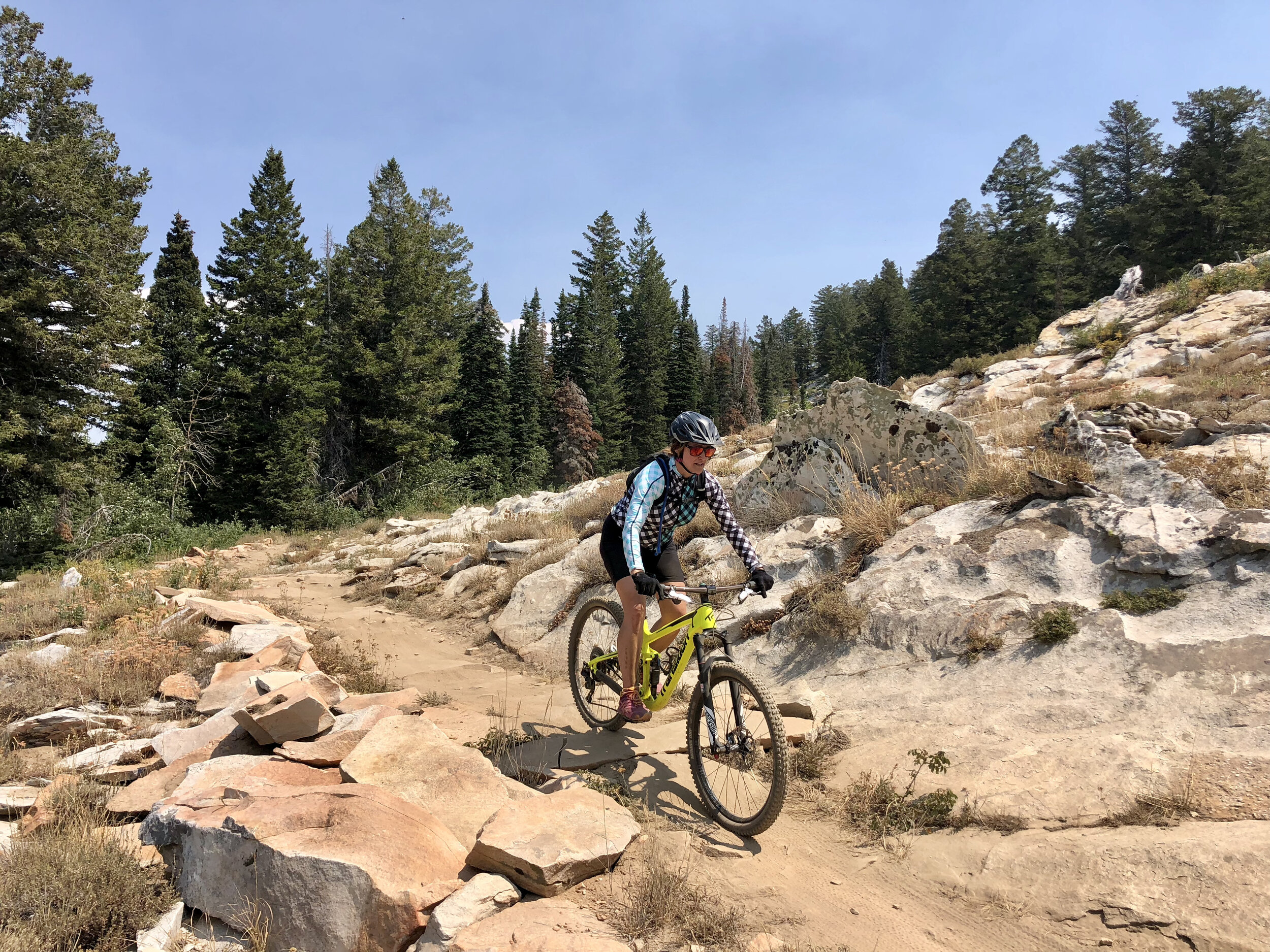Picking a Mountain Biking Trail
One reason we love mountain biking is that it allows us to access an incredible variety of landscapes. Riders can explore high-altitude ridgelines, alpine forests, red-rock deserts, glacial lakes, fields of wildflowers, country farmlands, and dense rainforests. Mountain biking offers magnificent vistas and the opportunity to improve skills on many types of surfaces. Do you feel the mountain wanderlust but are unsure where to start? We’re here to help! Mountain-biking routes can be classified by both surface tread and relative difficulty.
Terrain types:
Singletrack dirt trails—generally between 6 and 24 inches wide—are considered by many to be the quintessential paths for mountain biking. Singletrack terrain ranges from smooth, gently winding paths to highly technical, feature-filled routes that require advanced skills and intense focus.
Doubletrack dirt paths are spacious enough to ride two abreast, and are sometimes shared with off-road vehicles or were old motorized routes. They are generally mellow and have fewer obstacles and technical features than singletrack trails.
Fire Roads are graded dirt roads, typically used for service or emergency vehicle access. Before our highly developed trail systems, many mountain bikers rode mainly on fire roads or service roads. You will find certain areas where this riding is still prevalent, namely the Pacific Northwest, where they have an abundance of service or access roads from logging.
Rock gardens are usually part of larger trails where several large or small rocks are concentrated. These sections require balance, vision, and line-picking skills. Some beginners choose to dismount and walk past the technical section, which is perfectly acceptable; however, you will have more fun once you learn to safely and confidently navigate rocky sections. Be sure to check out our Technical Rock Riding clinics—these popular clinics sell out fast! You can also learn how to handle drops like a pro at our Intro to Drops, Jumps, and Air clinic.
Slickrock trails are found all over the globe, but have been made famous by red-rock desert meccas like Moab or St. George. Routes where large portions are slabs of rock and marked with painted-dash lines since there isn’t a physical trail per se. Sandstone rides like the iconic Slickrock Trail in Moab allow riders to traverse steeper grades than usual because the sandpaper-like surfaces create additional friction between the tire and trail. Granite trails are also a common trail surface. Many riders who usually use clipless pedals opt to use platform pedals on rocky trails since they are often quite technical and require frequent dismounting. You can sign up for a desert clinic here!
Snow-covered routes are gaining popularity and are most easily traveled using a fat-tire bike. As discussed in our winter-biking article, riding in the snow is generally much slower than riding on other surfaces. Fat biking should be done with relatively low tire pressure. Exact tire pressure is variable dependent on conditions. Be sure to never leave ruts in groomed fat biking or Nordic trails.
Terrain parks are human-built, stoke-inducing areas where riders of all levels can practice technical skills such as jumping, cornering berms, dropping off edges of various heights, and riding on skinny bridges. Terrain parks can be enjoyed as a primary style of riding or as a tool to prepare for riding natural features. Some terrain parks have lifts to assist you up the hills (especially at ski resorts), while others allow you the pleasure of peddling to the top after each joyride.
Difficulty Ratings:
Terrain difficulty ratings for a trail or segment are based on the hardest part of the trail and according to criteria set by the International Mountain Bicycling Association (IMBA). Natural obstacles include rocks, roots, stumps, logs, and drop offs. Technical trail features (TTFs)—often found at bike parks— are human-made and include bridges, jumps, drops, rails, half pipes, pump-tracks, and skinnies. It is very important to start on beginner routes and work your way up gradually. We highly recommend taking skills clinics to ensure that you are building good habits that increase stability, safety, and confidence! IMBA ratings are described briefly below.
Easy (green circles): Trails are at least 36” wide with gentle slopes and firm, with stable tread surface. Unavoidable obstacles and trail features are either avoidable or less than 2” high or less. Bridges are at least 36” wide.
Intermediate (blue squares): Trails are at least 24” wide, with moderate grades and mostly stable tread surfaces. Unavoidable obstacles and trail features are 8” high or less. TFFs are 24” high or less with deck width greater than half of height.
Difficult (black diamonds): Trails are at least 12” wide, with steep grades and variable tread surfaces that may include loose rocks. Unavoidable obstacles are 15” high or less. TTFs are 48” high or less, with deck width less than half of height. Unavoidable bridges are at least 24” wide. Short sections may exceed these criteria.
Extremely difficult (two black diamonds): Trails are at least 6” wide, with very steep grades and variable tread surfaces that may include loose rocks. Unavoidable obstacles are 15” high or less. TTFs are 48” high or greater, with deck width less than half of height. Unavoidable bridges may be less than 24” wide. Many sections may exceed these criteria. These trails are for experts only.
Where to find trails:
There are many ways to find trails. Be sure to check trail conditions before you start, and follow good trail etiquette once riding. Stay tuned for a future Tech Tuesday where we will discuss finding trails to ride more in depth!
Ask your friends what their favorite trails are, but check the difficulty rating before setting out since some advanced riders tend to forget what constitutes a gentle grade or easy obstacle.
Download an app on your phone or visit their corresponding website. Popular mountain biking trail apps include MTB, Trailforks, and Alltrails.
Ask about trails at your local bike shop. Most employees are happy to give you recommendations (especially if you’re giving them business).
Join a local mountain biking meetup group. Many regions have groups that meet for group rides periodically—some just for women. This is also a great way to meet others who ride! Search for groups in your area using Google, social media sites, and by asking for recommendations at bike shops.
Regardless of which trail you choose, check local guidelines and follow Leave No Trace principles. And, as always, enjoy the ride!
The Mountain Bike Mastery Course is where we take your mountain bike skills to the next level and way beyond. Join from anywhere in the world for the most in-depth, personalized coaching possible. Make some magic on your bike with Coach Erica Tingey supporting you every pedal stroke of the way.

